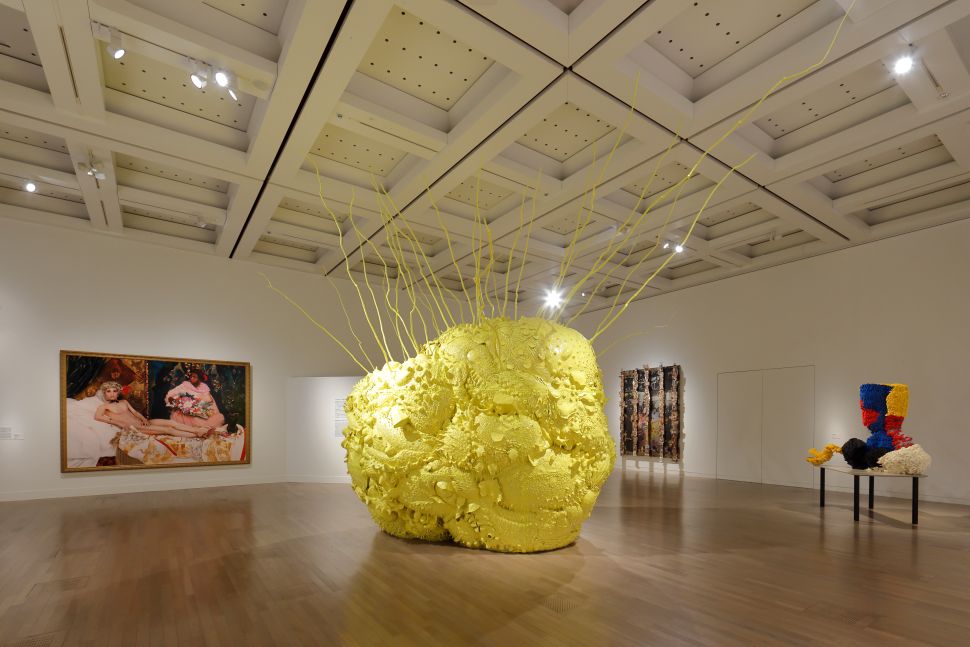 “Prism of the Real,” on through Dec. 8, explores how artists challenged the structures of power by creating new spaces for dialogue and experimentation. Photo: Keizo Kioku
“Prism of the Real,” on through Dec. 8, explores how artists challenged the structures of power by creating new spaces for dialogue and experimentation. Photo: Keizo Kioku
When thinking about art in Japan, most audiences are familiar with its traditional forms, the Gutai postwar movement, or more recent anime-manga subcultures and the Murakami-led Superflat aesthetic. Yet few surveys have examined how the country’s internationalization in the 1980s reshaped artistic expression alongside Japan’s shifting society and identity. That gap is addressed by the survey “Prism of the Real: Making Art in Japan 1989-2010,” a sprawling yet carefully curated exhibition that offers a fresh perspective on the evolution of Japanese contemporary art at this pivotal historical moment.
The survey strengthens ties between Japan’s art ecosystem and the broader international art world, organized through a partnership between the National Art Center, Tokyo and M+ in Hong Kong. As curator Doryun Chong emphasized during a press walkthrough, internationalization is not just its subject but its central message. As the title suggests, the focus is not on “Japanese art” but on “making art in Japan”—foregrounding the international dimension of Japan’s art scene as an open field that embraces creative exchanges with the world over three transformative decades.
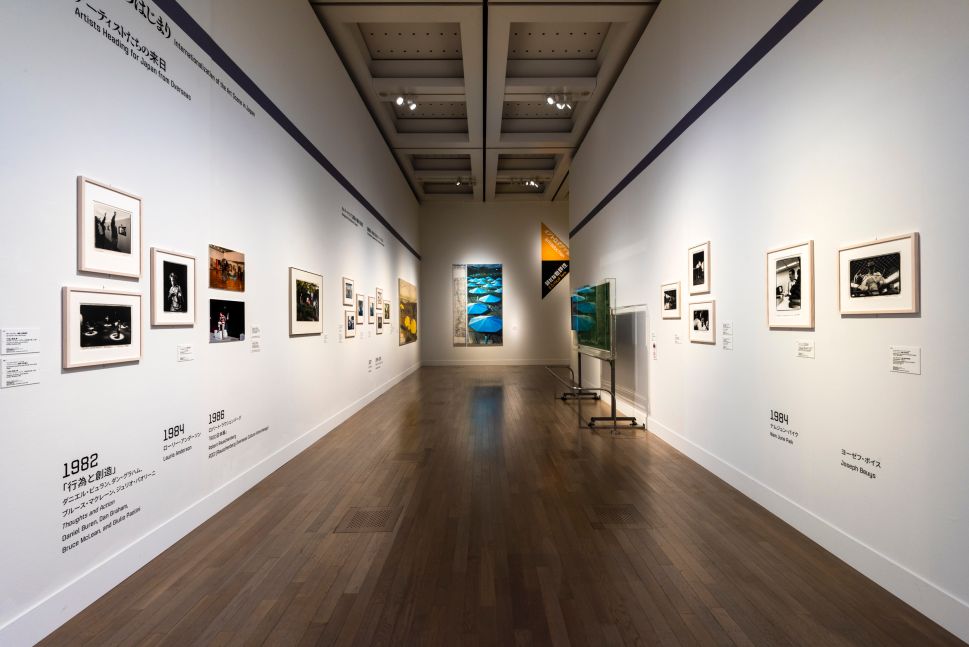
 The exhibition focuses on a two-decade period of rapid globalization that changed social structures and inspired new forms of expression. Photo: Ueno Norihiro
The exhibition focuses on a two-decade period of rapid globalization that changed social structures and inspired new forms of expression. Photo: Ueno Norihiro
The survey opens with a prologue on the first stirrings of internationalization in the 1980s before pivoting to 1989, when a surge of experimentation unfolded amid sweeping sociopolitical change. At the entrance, photographs by Anzai Shigeo, the era’s key documentarian, capture landmark encounters with figures such as Joseph Beuys and Nam June Paik—whom he first met in Germany but later photographed in Tokyo in 1984, when they performed together in the spirit of Eurasian unity at the end of the Cold War—alongside Robert Rauschenberg, Thomas Struth and Daniel Buren. This context is further enriched by the role of alternative art spaces such as Sagacho and ICA Nagoya, which were instrumental in bringing international artists to Japan, just as Japanese artists began asserting their presence on the global stage at biennials and Documenta.
Featuring more than 50 artists from Japan and abroad, the exhibition reflects on a transitional era when new practices emerged or drew inspiration from Japan between 1989—the end of the Shōwa era and the dawn of the Heisei era—and 2010, amid the competing forces of globalization, cultural competition, persistent ties to tradition and the resurgence of nationalism.
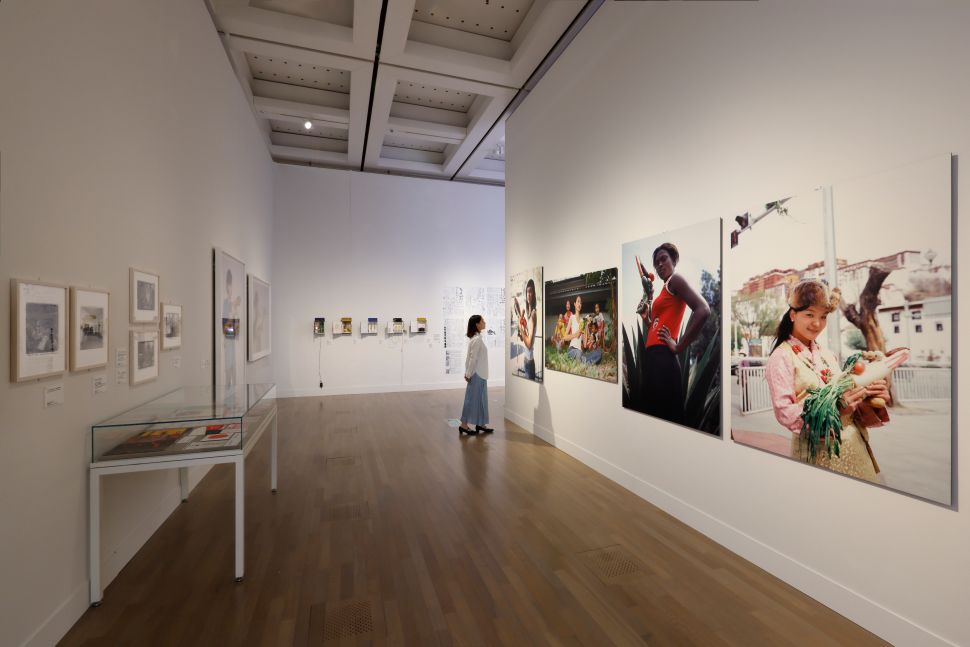
 1989 marked a turning point for art in Japan, with the emergence of innovative and dynamic forms of expression and new critical perspectives. Photo: Keizo Kioku
1989 marked a turning point for art in Japan, with the emergence of innovative and dynamic forms of expression and new critical perspectives. Photo: Keizo Kioku
The introduction continues with “A Critical Turn,” a section devoted to artists who emerged in the late 1980s, each charting distinct narratives across a variety of media yet all responding to a pivotal historical moment: Japan’s rise as a global superpower in industry and culture, shadowed almost immediately by the collapse of the economic bubble. Artists such as Morimura Yasumasa, Takashi Murakami, Yanagi Yukinori and Nakahara Kodai came to prominence in this period. Their practices cannot be subsumed under a single movement, yet together they capture the urgency and disorientation of a society caught between triumph and the unraveling of its identity, forced to contend with the new global role shaped by larger geopolitical and cultural forces.
This shifting identity, along with the tension between the country’s rich past, unstable present and uncertain future, unfolds through three thematic lenses that give structure to this insightful and thought-provoking exhibition.
Curatorial Lens 1: The Past Is A Phantom
The trauma of conflict, the specter of a once-celebrated empire and the persistence of colonial legacies continue to haunt collective memory, resurfacing in the art produced in Japan during these decades as artists wrestle with the unresolved weight of history.
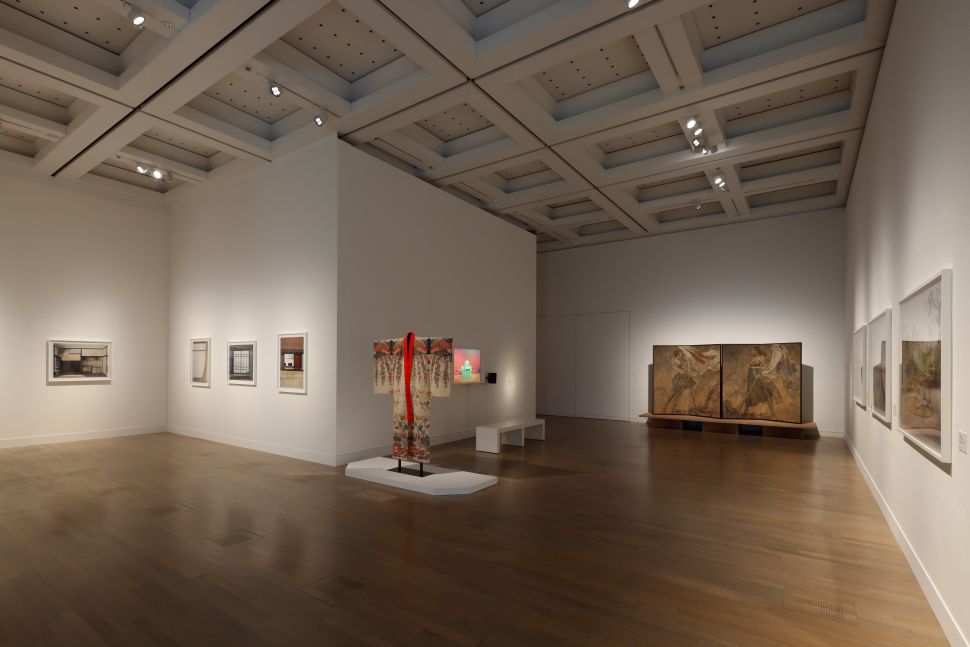
 The first section engages with history, exploring recurring subjects such as war, nuclear weaponry and colonialism. Photo: Keizo Kioku
The first section engages with history, exploring recurring subjects such as war, nuclear weaponry and colonialism. Photo: Keizo Kioku
Even in the seemingly innocent characters of Yoshitomo Nara, one can detect darker inheritances, as in works referencing the nuclear attacks or the Vietnam War’s Agent Orange. While best known for his wide-eyed, rebellious children often associated with pop or kawaii culture, Nara also exposes the psychological scars carried by postwar generations. In works from the late 1980s and early 1990s, his figures appear with military helmets, gas masks or captions hinting at chemical warfare and environmental devastation—reminders of how war technologies and their aftereffects seeped into Japanese daily life and memory long after the conflicts had ended.
Kazama Sachiko pushes this further, directly confronting the ghosts of colonialism and the violence embedded in imperial narratives through her stark black-and-white woodblock prints. In these powerful monochrome images, she excavates the darker strata of Japan’s recent history. Popular imagery and subcultural aesthetics collide with historical and political motifs as she stages dystopian visions in which colonialism, war and authoritarianism reemerge in allegorical form.
The nuclear age forms another critical fault line in Japan’s history. Yanobe Kenji’s Atom Suit Project: Nursery School 1, Chernobyl (1997) demonstrates how the Chernobyl disaster resonated with particular intensity in Japan, where the lived memory of Hiroshima and Nagasaki—and later Fukushima—renders nuclear trauma not abstract but profoundly visceral.
Meanwhile, Shitamichi Motoyuki’s photographs of ruined torii gates in former Japanese territories reveal how the empire’s imprint lingers materially in landscapes far from the archipelago. This enduring legacy of imperialism is echoed in Yoneda Tomoko’s photographs of Japanese-style houses in Taiwan, which highlight how the architecture of occupation has not only been preserved but sometimes even embraced as a status symbol, woven into the cultural fabric of the present.
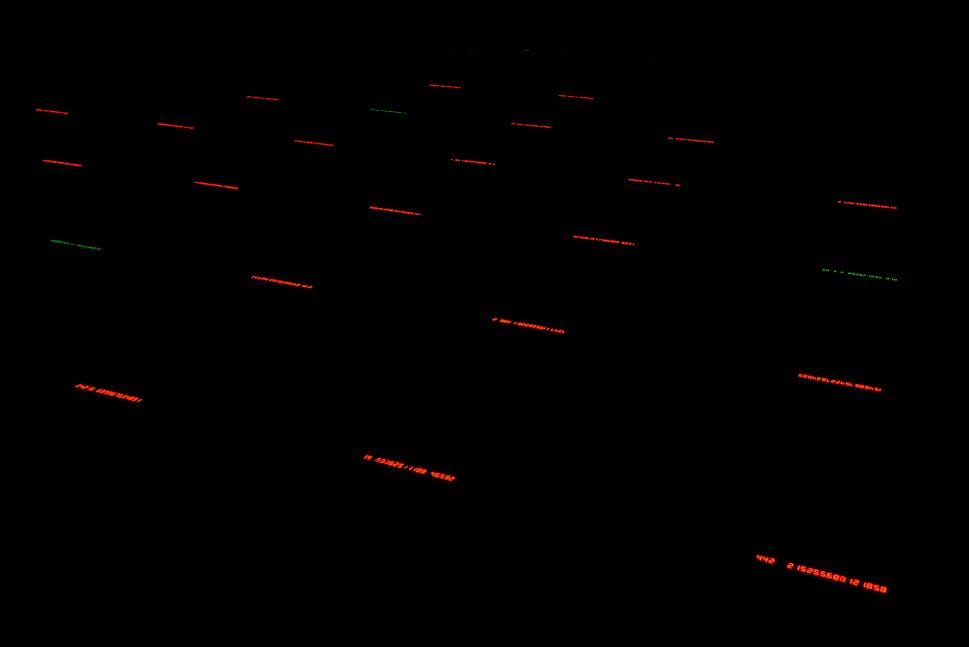
 The artists featured confronted and reinterpreted memories of war, reexamined gender and hierarchy in Japanese culture and considered the potential limits of human connection. Photo: Ueno Norihiro
The artists featured confronted and reinterpreted memories of war, reexamined gender and hierarchy in Japanese culture and considered the potential limits of human connection. Photo: Ueno Norihiro
Other artists address geopolitical fractures and the enduring impact of recent wars more directly, such as Aida Makoto’s Beautiful Flag (War Picture Returns) (1995). Painted on a traditional double screen, the work depicts a Japanese schoolgirl and a Korean schoolgirl, each holding their national flag in a heroic posture. The image provocatively recalls the Korea-Japan war, exposing how the relationship between the two nations remains contested and rarely addressed in art. As the curator noted, for an artist like Makoto—originally trained in a rural environment and highly skilled in traditional techniques—to bring this subject into the exhibition space was a groundbreaking gesture when the work was first presented in 1995.
The reality of Okinawa—Japan’s most militarized prefecture—emerges as a recurring theme in Teruya Yuken’s You-I, You-I (2002), where a kimono made from pineapple-fiber cloth unique to Okinawa is reimagined with decorative patterns that combine traditional motifs with images of parachuting soldiers, signaling how U.S. militarism has reshaped and embedded itself in everyday life. The U.S. strategy of protection, so often shifting into occupation and the projection of “soft” power—extending beyond Japan and repeating in other wars—is also critiqued in Takamine Tadasu’s God Bless America (2002), a clay animation video that targets U.S. policy in the wake of the Sept. 11 terrorist attacks and the subsequent invasion of Afghanistan.
In all these cases, history asserts itself not as a distant past but as a living presence—still active, still shaping identities, bodies and art across Japan, while resonating globally as the same histories repeat elsewhere.
Curatorial Lens 2: Self and Others
The acceleration of globalism in the 1990s and 2000s fueled the rapid circulation of people, goods and information, but it also brought new assertions of ethnic and national identity. The artists gathered here confront these tensions—questions of identity that sharpened after the Cold War—through the intertwined gazes of self and other.
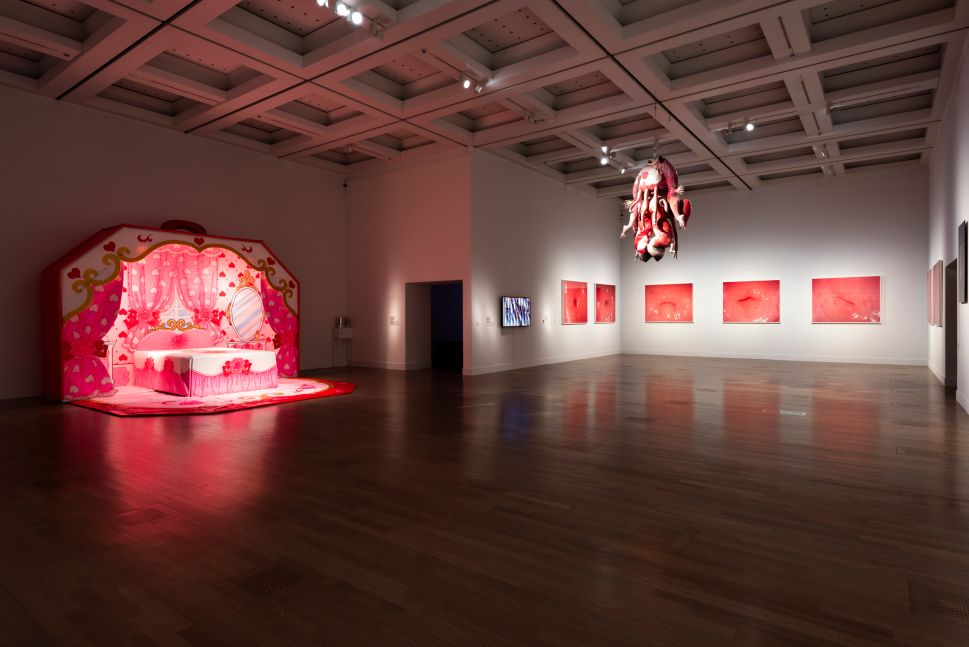
 Distinct and at times contradictory, Japanese culture remains a fertile and inspiring subject for artists from Japan and overseas to explore. Photo: Ueno Norihiro
Distinct and at times contradictory, Japanese culture remains a fertile and inspiring subject for artists from Japan and overseas to explore. Photo: Ueno Norihiro
Situated in Japan yet rejecting cultural exceptionalism, this second chapter features many works by women artists that confront gender and sexuality, cultural belonging and the collision between public and private spheres. Rooted in lived experience yet expanding into broader social questions, these works push identity beyond the self into collective terrain.
Nagashima Yurie, one of the first female photographers of her generation, turned the camera on herself in performances of selfhood that resisted labeling. Influenced by Nan Goldin—who even assisted her on a project—Nagashima staged intimacy and domestic scenes to challenge gender expectations in Japan, capturing the social performances of friends and peers as subcultural pulse and generational marker.
Kasahara Emiko’s Pink series complicates the representation of the female body and the conventional association of the color with “cuteness.” Rendered through abstraction, as if glimpsed in X-ray, these visceral pink compositions suggest softness and carnality while exposing the raw reality of flesh, desire and eroticism.
On a similar register, Lee Bul’s soft sculptures and costumes from her groundbreaking performance Sorry for Suffering—You Think I’m a Puppy on a Picnic? (1990) embody grotesque hybridity, confronting themes of abortion, mutation and control. In a radical endurance action lasting twelve days, the Korean artist traveled in her monstrous costume from Seoul to Tokyo, staging the body as a site of horror, vulnerability and resilience. This “abnormal” form—alien yet insistently embodied—became a seminal work linking Japan and Korea through shared trauma, opening dialogue where silence had long prevailed. At the same time, it addressed the mechanisms of societal control imposed on bodies, particularly through restrictions surrounding abortion.
The social role of women is also addressed in Yanagi Miwa’s Aqua-Jenne in Paradise II (1995), which stages a surreal reimagining of female archetypes and stereotypes in fantastical characters suspended between dream and critique. Draped in elaborate costumes and set against synthetic backdrops, Yanagi casts herself into mythic tableaux that parody and subvert the rigid expectations imposed on women in Japanese society.
The exhibition pairs Yanagi’s work with Joan Jonas’s layering of video, drawing, myth and live performance inspired by the legend of the Moon Rabbit and Matthew Barney’s collaboration with Björk in the Drawing Restraint series. Both works probe how international artists visiting Japan were deeply influenced by its traditional culture, reworking its myths and symbologies as archetypes to expose how identity is inscribed, constrained and transformed through collective storytelling and ritual.
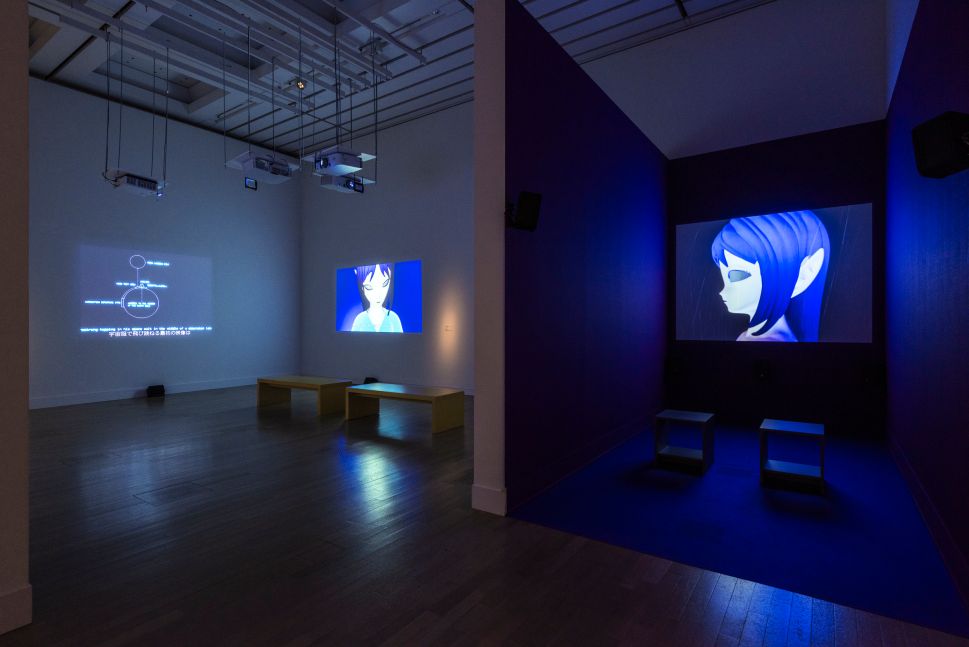
 From DIY works to large-scale international collaborations, Japanese art of the era surveyed in the show resisted isolation and embraced exchange. Photo: Ueno Norihiro
From DIY works to large-scale international collaborations, Japanese art of the era surveyed in the show resisted isolation and embraced exchange. Photo: Ueno Norihiro
Also part of this section is the pioneering multimedia project No Ghost Just a Shell, initiated by Pierre Huyghe and Philippe Parreno in 1999, which centered on Annlee, a pre-purchased, nearly generic Japanese manga character. Circulated among multiple artists, Annlee became a “common” medium—passed from hand to hand and continually reinterpreted, as in Rirkrit Tiravanija’s Ghost Reader C.H. (2002), on view in the exhibition. The project questioned authorship, ownership and the commodification of images in a globalized media economy, while also revealing the profound fascination with and influence of Japanese visual culture worldwide at the turn of the millennium. Annlee’s spectral presence—”no ghost, just a shell”—stood as a reflection on identity without essence, a body without origin and a potent emblem of collaboration and the instability of subjecthood in an age of shifting cultural flows. The project also drew from Masamune Shirow’s cyberpunk manga Ghost in the Shell, re-circulated through Mamoru Oshii’s 1995 film adaptation, which had already explored questions of identity, technology and posthuman embodiment—asking where the human ends and the machine begins, what the “shell” signifies and what remains as “ghost” (consciousness). These inquiries resonate with particular urgency today amid intensifying debates around the rise of A.I.
Also questioning the implications and possibilities opened by technology and the digital realm is the work of Mariko Mori: from her iconic early staged photographs, in which she appears as futuristic pop icons and cyborg-like figures, to her immersive installations that merge spiritual symbolism with cutting-edge technology. Mori has consistently explored how identity, transcendence and connectivity are reshaped in the digital age—a pursuit that not only continues to expand but grows more urgent in a society suspended between physical and virtual dimensions, driven by an enduring desire for transcendence that must find its channel in the in-between.
Curatorial Lens 3: A Promise of Community
This section explores how, beginning in the 1990s, artists in Japan—like their peers elsewhere—reimagined human relations and, with them, the social role of art in a more relational dimension. Here, artists began to imagine alternative ways of making connections and building relationships through art. This tendency marked an entire generation coming of age in the mid to late 1990s, attuned to differences in interpretation and committed to probing how symbols, communities and identities are constructed in relation to one another.
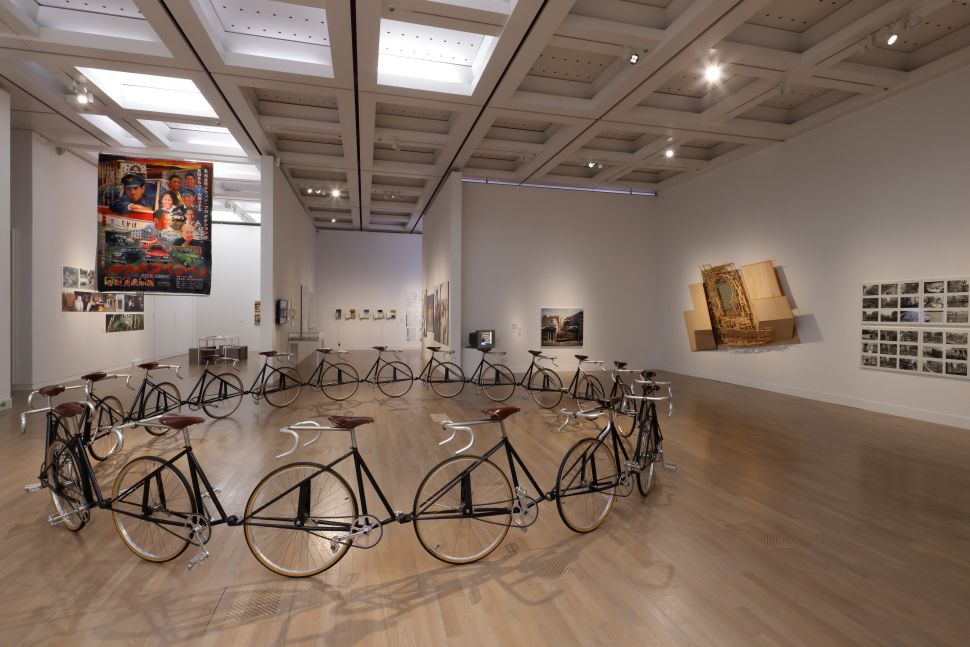
 Through collaboration with regional communities, artists sought new possible forms of connection, exploring how human relationships might liberate and break down hierarchies. Photo: Keizo Kioku
Through collaboration with regional communities, artists sought new possible forms of connection, exploring how human relationships might liberate and break down hierarchies. Photo: Keizo Kioku
Many of the practices in this section unfolded outside the museum through self-initiated and community-based projects that brought contemporary art to a broader public. Artists no longer waited for institutional validation and increasingly resisted the financialization of a rapidly expanding art market. Instead, they turned to independent, DIY modes of working.
Ozawa Tsuyoshi’s Nasubi Gallery transformed the ordinary milk delivery box—once a familiar sight outside every Japanese home—into a miniature exhibition space. With handwritten newspapers that circulated the shows, the project became a testament to the creative possibilities opened by DIY aesthetics and a spirit of self-organization, as artists sought alternatives to the structures of power embedded even in the newly institutionalized “art world.”
A more poetic metaphor for collective interdependence is found in Yutaka Sone’s Circle of 19 Bicycles, which stands upright only through shared balance. The fragile yet resilient arrangement offers a vivid image of symbiotic relationships and communal support.
At the same time, ambitious regional exhibitions were bringing Japanese and international artists together, forging expansive networks and transforming communities. To underline the continuity between the second and third chapters, the curators inserted an archival moment recalling “Ripples Across the Water,” a landmark exhibition organized by the Watarium Museum in 1995. Nearly 30 artists worldwide participated, many of whom were sent to different regions of Japan to engage with local craft traditions and produce site-specific works. The project exemplified how public and private institutions played a decisive role in driving internationalization.
By the 1990s, internationalism also expanded regionally, as Japan and neighboring countries began inviting artists “from next door.” The relationships between China, Japan and Korea—especially between Japan and South Korea—became an essential focus for this generation. Nakamura Masato stands out: as a young artist in the late 1980s, he and another then-emerging artist, Murakami Takashi, organized a group exhibition of young Japanese and South Korean artists in Seoul at a time when cultural exchanges were only just opening. Nakamura’s pop installation Barber Pole reflected his anthropological observation of cultural difference. Although the same symbol existed in Japan and Korea, its meaning diverged radically—in Korea, the barber pole could also signal semi-clandestine sexual services. Through this work, Nakamura underscored how two countries in such close proximity could nevertheless invest identical symbols with profoundly different meanings.
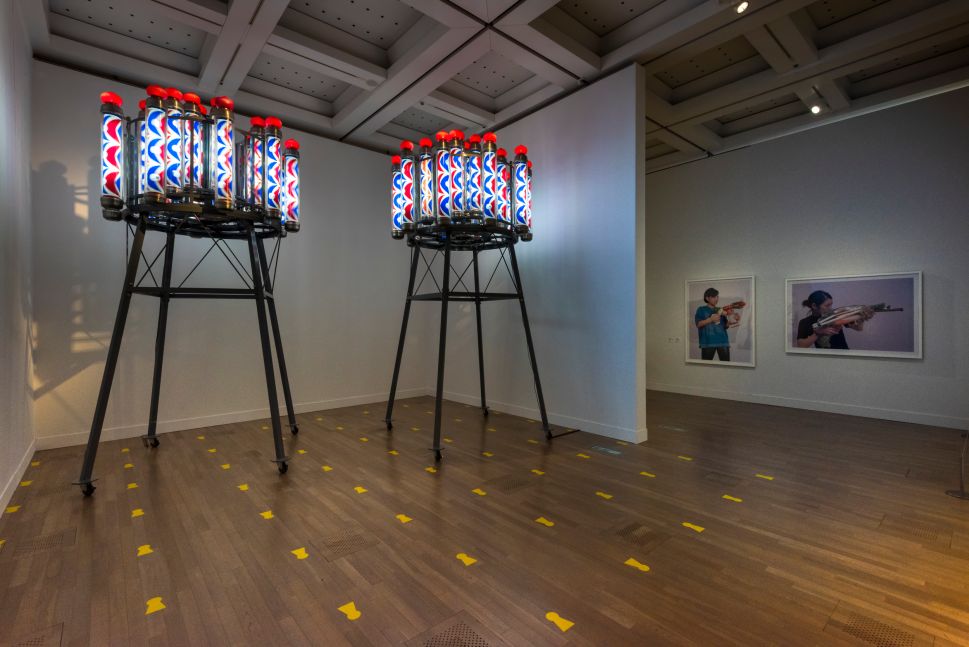
 The exhibition offers a multifaceted view of Japanese art in which multiple perspectives intersect. Photo: Ueno Norihiro
The exhibition offers a multifaceted view of Japanese art in which multiple perspectives intersect. Photo: Ueno Norihiro
At the time, entire collectives emerged that embodied transnational collaboration and shared imagination, often in deliberate resistance to the hegemony of the Western art world. Particularly striking are the works of the Xijing Men—Ozawa Tsuyoshi (Japan), Chen Shaoxiong (China) and Gimhongsok (Korea)—a collective named after their fictional East Asian city-state of Xijing. During the 2008 Beijing Olympics, they staged their own absurd Olympics: weightlifting with sticks and bottle caps, judged by friends and family. Overcoming linguistic barriers through gestures and working across performance, installation and parody, they caricatured nationalist myths while exposing the arbitrariness of borders and the comic fragility of national spectacle.
Shimabuku extended this playful internationalism further. For the São Paulo Biennale, he invited the repentista street performers Peneira and Sonhador to “subtitle” his octopus video not with text but with improvised song, turning translation into a live act of musical exchange. The video presented here demonstrates how collaboration across cultures can generate new, shared meanings beyond conventional codes.
Closing on this affirmative note of internationalism, the exhibition stands not only as a crucial survey of an often overlooked chapter of Japanese contemporary art but also as a message for today’s increasingly divided world. It underscores creativity as a vehicle for reimagining society beyond barriers, showing the power of play, dialogue and shared imagination to reframe, challenge and ultimately replace the rigid hierarchies of nationalism and institutional control.
More exhibition reviews

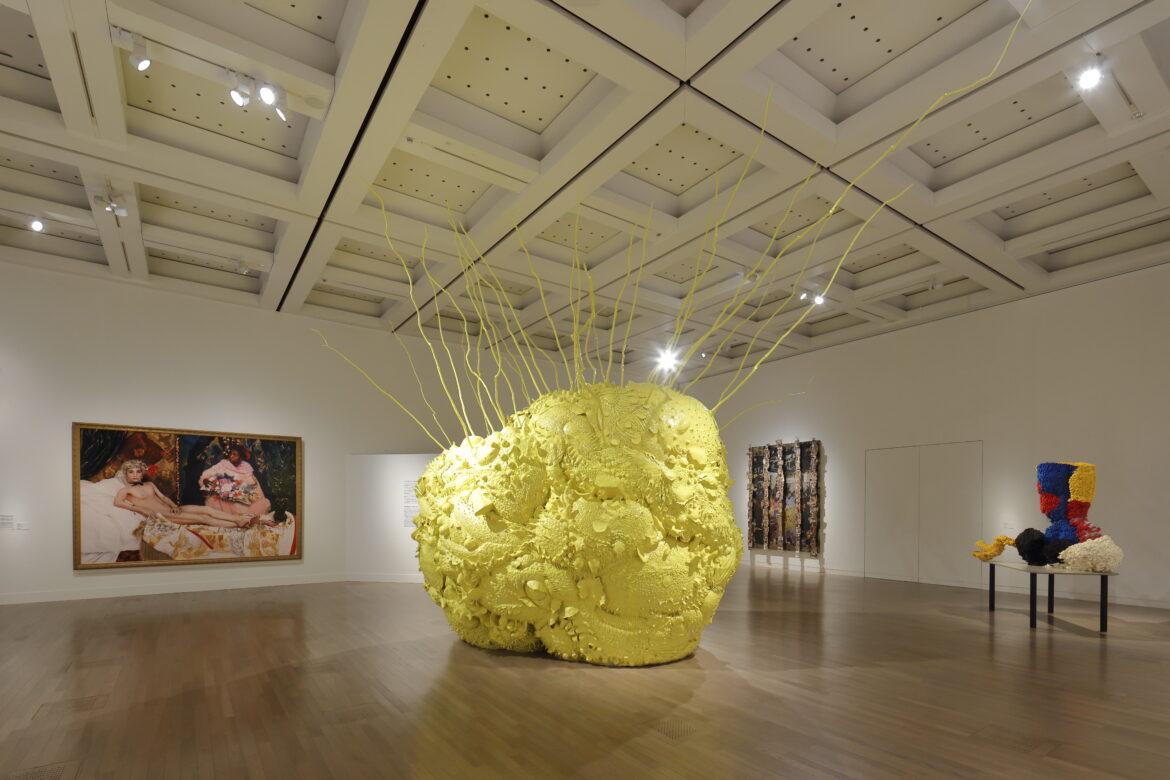
AloJapan.com